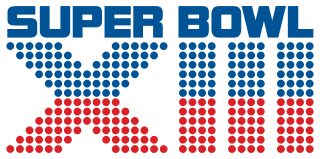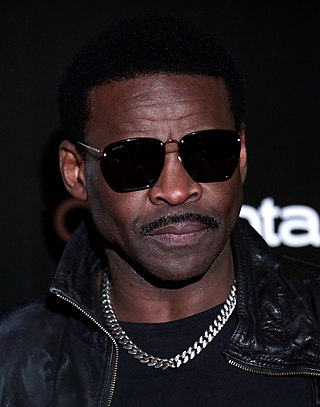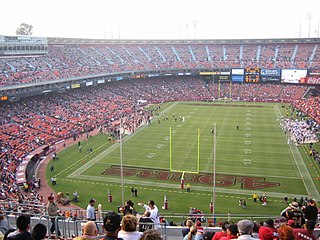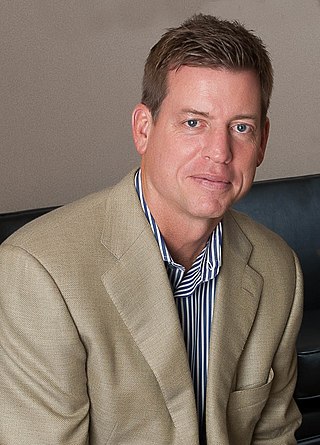
The Dallas Cowboys are a professional American football team based in the Dallas–Fort Worth metroplex. The Cowboys compete in the National Football League (NFL) as a member club of the league's National Football Conference (NFC) East division. The team is headquartered in Frisco, Texas, and has played its home games at AT&T Stadium in Arlington, Texas, since its opening in 2009. The stadium took its current name prior to the 2013 season. In January 2020, Mike McCarthy was hired as head coach of the Cowboys. He is the ninth in the team's history. McCarthy follows Jason Garrett, who coached the team from 2010 to 2019.

Super Bowl XIII was an American football game between the American Football Conference (AFC) champion Pittsburgh Steelers and the National Football Conference (NFC) champion Dallas Cowboys to decide the National Football League (NFL) champion for the 1978 season. The Steelers defeated the Cowboys by the score of 35–31. The game was played on January 21, 1979, at the Miami Orange Bowl in Miami, Florida, the fifth and last time that the Super Bowl was played in that stadium.

Super Bowl XXVII was an American football game between the American Football Conference (AFC) champion Buffalo Bills and the National Football Conference (NFC) champion Dallas Cowboys to decide the National Football League (NFL) champion for the 1992 season. The Cowboys defeated the Bills by the score of 52–17, winning their third Super Bowl in team history, and their first one in 15 years. This game is tied with Super Bowl XXXVII as the fourth-highest scoring Super Bowl with 69 combined points, as of 2023. The Bills became the first team to lose three consecutive Super Bowls, and just the second of three teams to play in three straight. The following 1993 season, the Bills became the only team to both play and lose four consecutive Super Bowls. The game was played on January 31, 1993, at the Rose Bowl in Pasadena, California, and is the last NFL championship game to date to be held in a non-NFL stadium. It was also the seventh Super Bowl held in the Greater Los Angeles Area, which did not host another until Super Bowl LVI in 2022.

Thomas Wade Landry was an American professional football coach, player, and World War II veteran. Regarded as one of the greatest head coaches of all time, he was the first head coach of the Dallas Cowboys in the National Football League (NFL), a position he held for 29 seasons. During his coaching career, he created many new formations and methods, such as the now default defense the 4–3 defense that is used by a majority of teams in the NFL, and the "flex defense" system made famous by the "Doomsday Defense" squads he built during his tenure with the Cowboys. His 29 consecutive years from 1960 to 1988 as the coach of one team is an NFL record, along with his 20 consecutive winning seasons, which is considered to be his most impressive professional accomplishment.

Michael Jerome Irvin is an American sports commentator and former professional football player. He played his entire 12-year career as a wide receiver for the Dallas Cowboys of the National Football League (NFL). In 2007, he was inducted into the Pro Football Hall of Fame.
Wilford Daniel White is an American former football quarterback who played for 13 seasons with the Dallas Cowboys of the National Football League (NFL). He was the third major franchise quarterback in Cowboys history, following Roger Staubach and Don Meredith. White was 62-30 as a starter, was a second team All-Pro selection in 1982, and led the Cowboys to five playoff appearances, with three consecutive appearances in the NFC Championship game from 1980-1982. White was also among the last Cowboys quarterbacks in the Tom Landry era, alongside 1988 starter Steve Pelluer.

The Catch was the game-winning touchdown reception in the 1981 NFC Championship Game played between the Dallas Cowboys and the eventual Super Bowl XVI champion San Francisco 49ers at Candlestick Park on January 10, 1982, as part of the 1981-82 NFL playoffs. With 58 seconds left in the game, the 49ers faced 3rd down and 3 yards to gain on the Cowboys' 6-yard line. San Francisco wide receiver Dwight Clark made a leaping grab in the back of the end zone to complete a 6-yard touchdown pass from quarterback Joe Montana, enabling the 49ers to defeat the Cowboys, 28–27. The Catch is widely regarded as one of the greatest plays in National Football League (NFL) history. It came at the end of a 14-play, 83-yard game-winning drive engineered by Montana. The Catch symbolized the end of the Cowboys' domination in the NFC since the conference's inception in 1970, and the beginning of the 49ers' rise as an NFL dynasty in the 1980s.

The National Football League playoffs for the 1970 season began on December 26, 1970. The postseason tournament concluded with the Baltimore Colts defeating the Dallas Cowboys in Super Bowl V, 16–13, on January 17, 1971, at the Orange Bowl in Miami, Florida.
David Monroe Edwards was an American football linebacker in the National Football League (NFL) for the Dallas Cowboys. He played college football at Auburn University.
Walter Benton Garrison was an American professional football player who was a fullback in the National Football League (NFL) for the Dallas Cowboys. He played college football for the Oklahoma State Cowboys.

Troy Kenneth Aikman is an American former football quarterback who played in the National Football League (NFL) for 12 seasons with the Dallas Cowboys. After transferring from Oklahoma, he played college football at UCLA, where he won the Davey O'Brien Award as a senior. Aikman was selected first overall in the 1989 NFL Draft by the Cowboys, received six Pro Bowl selections, and won three Super Bowls. He was also named MVP of Super Bowl XXVII, the franchise's first title in over a decade. Aikman was inducted to the Pro Football Hall of Fame in 2006 and the College Football Hall of Fame in 2008.
Jimmy Lee Smith Jr. is an American former professional football player who was a wide receiver in the National Football League (NFL) for the Dallas Cowboys and Jacksonville Jaguars. He played college football for the Jackson State Tigers. With the Cowboys, he won two consecutive Super Bowls over the Buffalo Bills.
Ronald Edward Springs was an American football running back in the National Football League (NFL) for the Dallas Cowboys and Tampa Bay Buccaneers. He played college football at Ohio State University.
Gerald J. Tubbs was an American football linebacker in the National Football League (NFL) for the San Francisco 49ers and Dallas Cowboys. He was selected by Chicago Cardinals in the first round of the 1957 NFL Draft. After his retirement, he stayed with the Cowboys as an assistant coach for 22 years. He played college football at the University of Oklahoma.

Michael William Hegman is a former American football linebacker who played professionally in the National Football League (NFL) for the Dallas Cowboys. He played college football at Tennessee State University.
This article contains an in-depth explanation of the history of the Dallas Cowboys, a professional American football team that competes in the National Football League (NFL).
Obert Clark "Butch" Logan was an American football safety who played in the National Football League (NFL) for the Dallas Cowboys and New Orleans Saints. He played college football at Trinity (TX). Logan, whose nickname was "The Little O", was the last player in the NFL to wear the single-0 jersey until 2023.
The 1971 Dallas Cowboys season was the franchise's 12th season in the National Football League (NFL), the first at the new Texas Stadium in suburban Irving, Texas and the 12th season under head coach Tom Landry. The Cowboys led the NFL with 406 points scored. Their defense allowed 222 points.
The 1978 Dallas Cowboys season was their 19th in the National Football League (NFL). For the third consecutive season, the Cowboys finished in first place in the NFC East. The Cowboys scored 384 points, which ranked first in the league, while the defense only gave up 208 points, 3rd best in the league. Twice, the Cowboys appeared on Monday Night Football.

Cedarian DeLeon "CeeDee" Lamb is an American football wide receiver for the Dallas Cowboys of the National Football League (NFL). He played college football at Oklahoma where he was a consensus All-American in 2019, and was drafted by the Cowboys in the first round of the 2020 NFL Draft.










